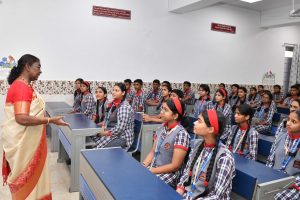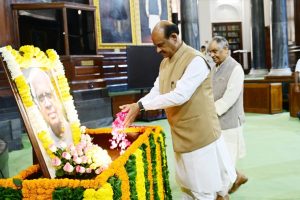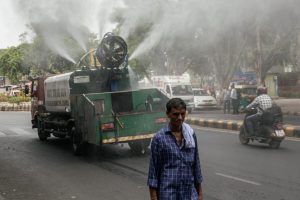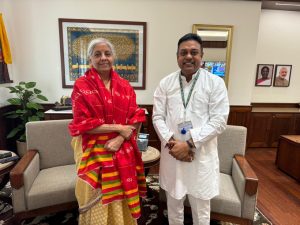Editorial analysis: In Droupadi Murmu, BJP’s tribal, women gains; states dangerously in debt trap

Photo Credit Special arrangement
In the daily editorial analysis, except for Sundays, The Raisina Hills critically reviews the comments of the top five English newspapers of India.
Except for The Time of India (ToI), most of the dailies missed out on commenting on yesterday’s two trending developments in their Edit pages– Opposition and NDA naming their Presidential candidates and Shiv Sena’s Eknath Shinde pulling the rug from under the feet of Maharashtra Chief Minister Uddhav Thackeray.
The ToI in its Edit ‘The Next President’ has lauded the BJP’s Droupadi Murmu choice for the Presidential election. Arguing that the BJP has sent a strong political signal, the ToI noted that the Opposition missed out in doing so.
The daily writes on predictable lines that Murmu is well qualified having been an MLA, Governor, while women representation in legislature and parliament remains abysmally low, and the BJP may stand to gain electorally in Gujarat, Chhattisgarh, Jharkhand, and Odisha where the tribal have been ignoring the overtures of the saffron outfit.
The ToI has a word of advice for the BJP too, as it asks the party to focus on economy.
The Edit, indeed, is unidimensional, for it goes on finding reasons to laud the BJP decision, while not venturing to comment on President, the conscience keeper of the nation, and remaining mum on socio-religious conflicts in the country in the recent years, and why the Presidential election should be more than caste and gender.
With ‘Maha Melodrama’ Edit, the ToI has sought to given an account of the fluid political situation in Maharashtra, which is developing, given that the rebel MLAs led by the state minister Eknath Shinde now have shifted to Guwahati, Assam in the protection of the master political tactician and the state chief minister Himanta Biswa Sarma.
While stating that there’re no easy options for Uddhav. The ToI comments that the Shiv Sena faces the danger of permanently becoming the B-team of the BJP.
Politics based on populism is the hallmark of Indian democracy. The Reserve Bank of India and the Ministry of Finance are now worried that the debt situations in some of the states may slip out of control.
The Indian Express (IE) and The Economic Times (ET) in their Edits ‘Note To States’ and ‘States, Do Look At Your Borrowings’ respectively have cautioned against the rising trend of populist politics.
The IE referred to a study by the RBI to stress than 10 states – Punjab, West Bengal, Bihar, Odisha, Kerala, Rajasthan, Andhra Pradesh, Jharkhand, Madhya Pradesh, Uttar Pradesh and Haryana – have the highest debt.
Bihar, Kerala, Punjab, Rajasthan and Wet Bengal with 30 percent debt to GDP ratio are the worst, noted IE, while advising that states should improve their revenue, reduce non-merit subsidies.
The ET has noted that the leeway granted to the states to increase borrowings during the Covid-19 pandemic has led to a mushrooming of off-balance-sheet borrowings. The Centre has begun taking a close look at the loan books of the states. At Dharamashala in Himachal Pradesh, the Finance Secretary had also made presentation to the state chief secretaries on their debt situations.
The ET has also underlined that the debt situation is beyond comfort since the combined borrowings of the Centre—states now accounts for 90 per cent of the GDP against the norm of 60 percent.
But both the dailies have let off the Centre in being the trend-setter in pursuing populist policies. For instance, who should Pradhan Mantri Garib Kalyan Anna Yojna continue for 80 crore population.
The Hindu in its Edit ‘Progress without limits’ has called upon the Central government to ensure that the benefits of the roll-out of the 5G should reach out to the largest sections of the population. While stating the prices for the fee are still high, the Hindu hoped that the transformative technology will spur the digital connectivity for the larger benefits of the people.
Deccan Herald (DH) has termed India’s life expectancy rising from 68.6 years to 69.7 years a minor achievement against the global average of 72.6 years. India is behind China (76.9 years), Nepal (70.5 years) and Bangladesh (72.1 years), noted DH.







